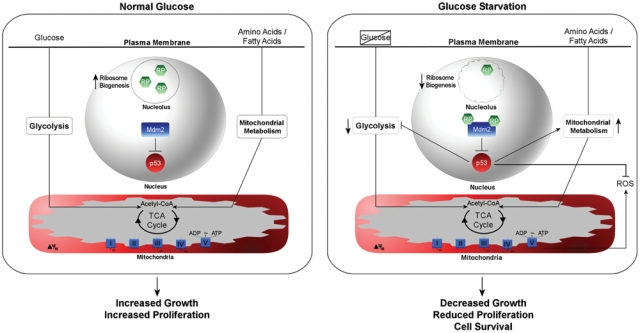Figure 2.

Hypothetical model for nutrient partitioning through the RP-Mdm2-p53 pathway. (Left panel) During normal periods of growth when glucose levels are adequate, ribosomal proteins (RPs) are sequestered in the nucleolus to promote ribosome biogenesis, and p53 levels are maintained at low levels by Mdm2. Glucose utilization is high and amino acid or fatty acid catabolism may supplement energetic requirements as necessary for anabolic growth and division. (Right panel) Glucose deprivation, through suppression of ribosome biogenesis, may induce a nucleolar stress response (squiggled circle), prompting RP inhibition of Mdm2 to stabilize p53. p53 transactivation may downregulate glycolytic rates and promote mitochondrial metabolism through enhanced oxidation of amino acids and fatty acids. In addition, enhanced reactive oxygen species (ROS) levels may be neutralized by p53-induced antioxidants. The functional outcome of glucose deprivation could be to promote cell survival by using alternative carbon sources while simultaneously attenuating energetically demanding growth and proliferation.
